After COVID-19, we have an incredible opportunity to redesign our social systems and the economy so they work for people and the planet alike. In this post, we explore how that might work.

This story is co-authored by Tim Frick and JD Capuano at Mightybytes, a Certified B Corporation and public benefit corporation in Chicago, Illinois.
We’re in the middle of a global pandemic that hits our most vulnerable communities hardest. In Chicago, for example, where Mightybytes is located, African American residents comprise 72% of deaths from COVID-19, despite making up only 30% of the city’s population. Our hearts are with those who are sick, grieving, putting themselves at risk on the job, or unemployed.
The recent 50th anniversary of Earth Day is a good time to honor nature and learn from its lessons to create a healthier, more just, and equitable world. We’re committed to making real and lasting change now and when the pandemic is behind us. Here are some thoughts on how we might achieve this.
Spotlight on Failure
This pandemic’s devastation has put a spotlight on how our systems fail to adequately support people’s basic needs. The failure was clear if you were paying attention before the crisis and has become unmistakable now. If we “return to normal” once the pandemic eases, we’ll pick up right where we left off — stuck in an economic system that disproportionately benefits the few at the expense of many. Returning to normal is not an option. We must do better.
At its worst, continuing with business as usual could lead to millions of people dying and a revolt by the marginalized and disenfranchised. Civil unrest is growing during the pandemic. It will be widespread as climate change continues unabated. If we stay the course, the best we can hope for is incremental improvements to our social and environmental problems. Incremental improvements are better than no change but woefully insufficient to overcome the enormous problems facing humanity. This approach will still leave many millions, if not billions, of people behind.
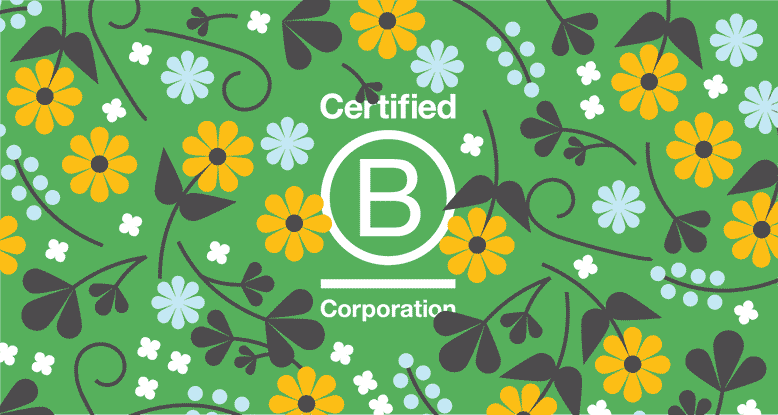
Resilience and Adaptation
Yet, in the face of this tragedy, we see countless examples of organizations across sectors stepping up, pivoting their business models, adapting to new circumstances, and forging partnerships to keep themselves and each other afloat during these trying times.

- Our friends at Climate Ride produced their first-ever virtual event, Climate Rise, attracting more than 300 participants and raising more than $60,000 to help their nonprofit beneficiaries.
- Fellow Illinois B Corp Meliora Cleaning Products partnered with local distillery FEW Spirits to create hand sanitizer for people on the front lines of the COVID-19 pandemic.
- OpenIDEO created the COVID-19 Business Pivot Challenge to help organizations rapidly shift their focus, redirect assets, and fill gaps in global pandemic response efforts.
- Another Illinois B Corp, Apologue Liqueurs, worked with a local restaurant group to provide meals to health care workers while also supporting the Hospitality Worker Relief Fund.
These are just a few examples, some from within our own network. The global B Corp community is filled with stories like these. Certified B Corps have proven to be resilient and adaptable during this crisis. Many struggle, to be certain. The stories are heartbreaking. Yet with such a vibrant, passionate, and caring community, strong company policies, incredible resources at our fingertips, and a mandate to include stakeholders in all decisions, B Corps give us hope. These companies are hardwired to successfully cope with this adversity, certainly better than many large, traditional companies. B Corps make up just one business community. Communities around the globe have come together like never before to help each other during these trying times.
Given what lies ahead, resilience and adaptation must be core to the business strategies of all organizations moving forward.
This pandemic has also proven how quickly the world can act with proper motivation. We can learn from this experience and draw from nature to redesign our social systems in ways that work for people and planet alike.
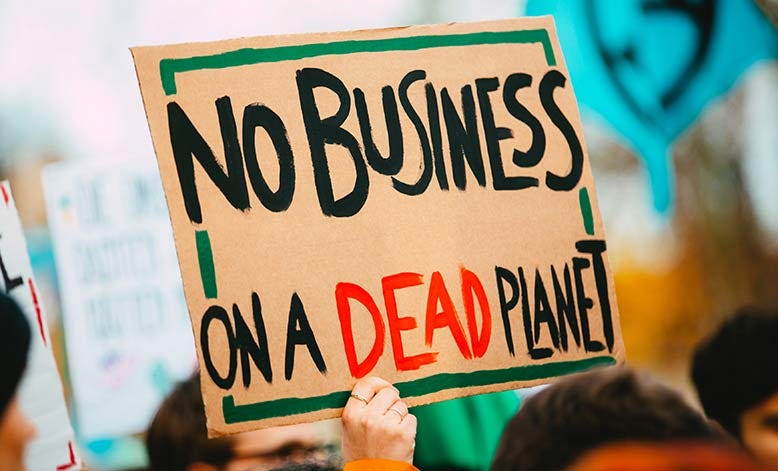
Redesigning the Economy
The recovery can empower us to change how our economic systems work. Only a renaissance in business, investment, and economic philosophy that rewards solving social and environmental problems — not just doing less harm — will make real and lasting change. We need an economic system that incentivizes action toward meaningful long-term change for the things we value before profit, like people and planet. The reality is plain and simple: If we don’t care for people and planetary resources, there won’t be any revenues, profits, or jobs to be had. End of story.

What might such an economy look like? We already have a model in Doughnut Economics. Championed by British economist Kate Raworth and based on her book of the same name, Doughnut Economics is a sustainable development framework that prioritizes meeting the needs of people and society without overshooting our planet’s ecological ceiling. The doughnut’s “hole” depicts the extent to which people lack access to life’s essentials: food, shelter, health care, education, and so on. The doughnut’s outer “crust” represents planetary boundaries that life depends on and that we must not overshoot. The concept is already being put to use in Amsterdam. Interested in a quick Doughnut Economics primer? Check out Raworth’s TEDx Talk below.
The Doughnut Economics Action Lab will launch an online platform in June 2020 to translate the concepts in Raworth’s book into actionable practices that any organization can use.
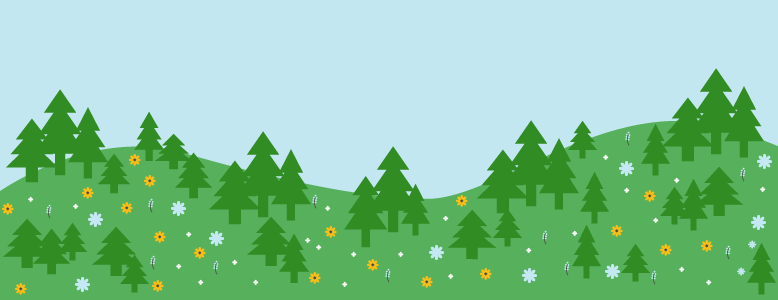
Nature as Inspiration
Nature offers endless sources for inspiration. A healthy ecosystem is a good model for an economy that is highly collaborative, prioritizes people, and respects planetary boundaries.
Think of an old-growth forest. Much of what makes it work is unseen, overlooked, and underappreciated by humans. We have known for years that fungus, for instance, converts decaying forest matter into resources. That it’s also a distributed network enabling information and resource sharing has only come to light in the last few years. Insects maintain healthy soil, pollinate plants, and do so much more. Birds and animals spread seeds, distributing plants to maintain biodiversity. Grazers keep plant populations in check. Predators keep bird and grazer populations in check.
To put it simply, when you look at the whole of a healthy ecosystem, it has core functions that work together to keep the system strong. When one element gets out of balance, it triggers a domino effect that may seem slight at first but can quickly wreak havoc on the entire system. When in balance, the whole system thrives.

A Healthy Economic Ecosystem
Just like a healthy natural ecosystem, a healthy economic ecosystem needs core functions that complement and counter-balance each other to keep the entire system flourishing. Here are four:
- A private sector that realigns business models to solve social and environmental problems that follow the principles of Doughnut Economics.
- An effective public sector that isn’t captured by the private sector and has the proper checks and balances to serve all its constituents well.
- A healthy nonprofit sector to serve as change catalysts and watchdogs for businesses and governments at all levels.
- Broad and strong partnerships that reach across sectors and are pre-competitive for private sector participants to share resources and achieve more together.
Transforming our economy is a monumental task that’s worth the effort. There was plenty of talk about an economic transformation before COVID-19 hit. We’re hopeful that the pandemic will convince more people that our system failures demand bold change. How do we get there?
A New Social Contract
Our friends at BSR have proposed a new social contract for after the current crisis passes:
“The COVID-19 crisis makes one thing abundantly clear: The social contract between government, business, employees, and people is not working as it should.”
— Dunstan Allison-Hope and Katie Abbott, BSR
With great urgency, their contract calls for better safety nets and stronger rights to address the many social problems, pressures, and inequalities people face. It adheres to many of the principles outlined above.
In addition to the points in BSR’s social contract, let’s also be more specific about people who are chronically underserved or discriminated against because of race, economic status, gender identity, sexual orientation, immigration status, or religion. Let’s expand the contract’s environmental focus beyond transitioning to a low-carbon economy and include circular, regenerative models as well.
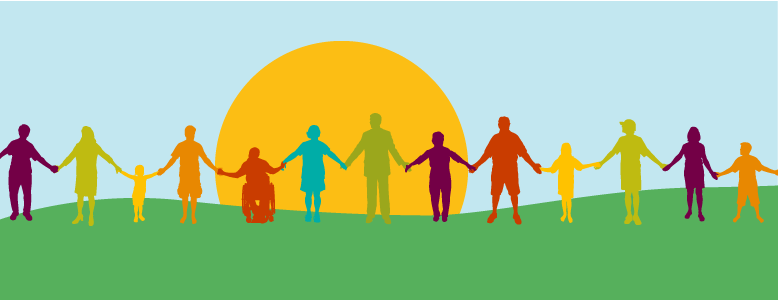
Designing for Interdependence
The COVID-19 pandemic has reminded us how interdependent we are on one another and with the systems we rely upon to exist. It is time to redesign these systems for better resilience and to support a long-term vision of shared prosperity for people and planet alike.
To do this, companies need to invest more resources in their interdependent relationships with one another, with other sectors, and with the customers they rely on for their livelihood. Investors need to adopt a long-term focus so companies can stop chasing quarterly returns and focus on shared value. Nonprofit organizations need to spend less time being watchdogs to for-profit companies and more time forging productive, strategic partnerships to create meaningful change. And finally, well-crafted regulations can help all sectors design new approaches to solve these vexing problems.
Using interdependence as a guiding design principle, players across sectors can take immediate actions:
- Workers: Assess wages, benefits, and conditions for workers. Does everyone receive a living wage, health insurance, retirement assistance? What about professional development and career support?
- Impact Business Models: Evaluate your business model for social and environmental impacts, as B Corps do. If you want to foster innovation in your products, services, or programs, perhaps a Design Sprint or other Design Thinking exercise can help.
- Problem-Solving: Are you sure your organization is solving the right problems? A problem-solving workshop can help your team better understand how a problem impacts different stakeholders from a variety of perspectives. Here’s a workshop template to get you started.
- Setting Targets: Set clear targets for problems you plan to address. The U.N. Sustainable Development Goals, for example, provide 169 specific targets with which to align your products, services, and programs. The SDG Action Manager can help too.
- Partnerships: For most organizations, this will require expertise or resources you don’t have. Forge strategic, cross-sector partnerships with organizations whose products, services, and programs complement your own.

Making Change Relevant
This moment in history offers an opportunity to better understand our interdependence and figure out what we value. Do we continue on with our current systems that fail us, or do we redefine success to put people first and stay within planetary boundaries?
We have all seen rapid change, both good and bad, happen in the wake of COVID-19. The change required to enable a future where shared prosperity is the norm won’t happen if we don’t make it relevant for everyone. The solutions needed require long-term, big picture thinking that, frankly, we humans are not very good at.
The powerful few who benefit from our existing paradigm are already using their extensive resources to herd us back toward business as usual. Let’s not allow that to happen. Let’s use this time as our catalyst to design a better world with systems that work for everyone.
A version of this article was published earlier by Mightybytes. B the Change gathers and shares the voices from within the movement of people using business as a force for good and the community of Certified B Corporations. The opinions expressed do not necessarily reflect those of the nonprofit B Lab.
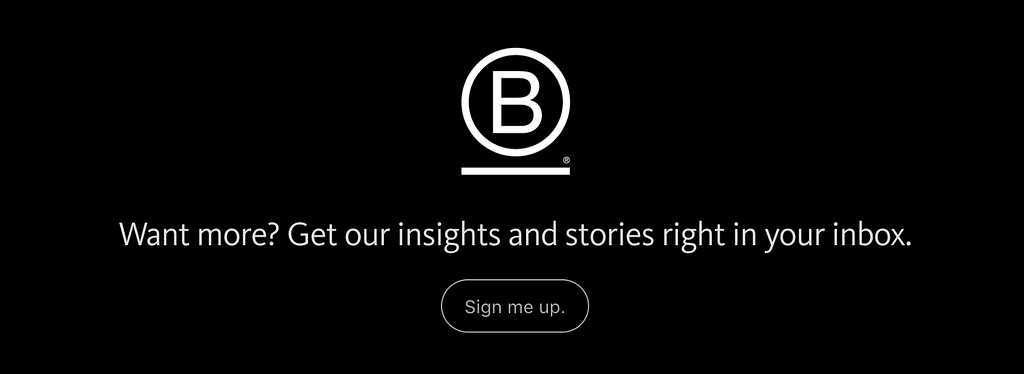
Redesigning How We Work was originally published in B The Change on Medium, where people are continuing the conversation by highlighting and responding to this story.